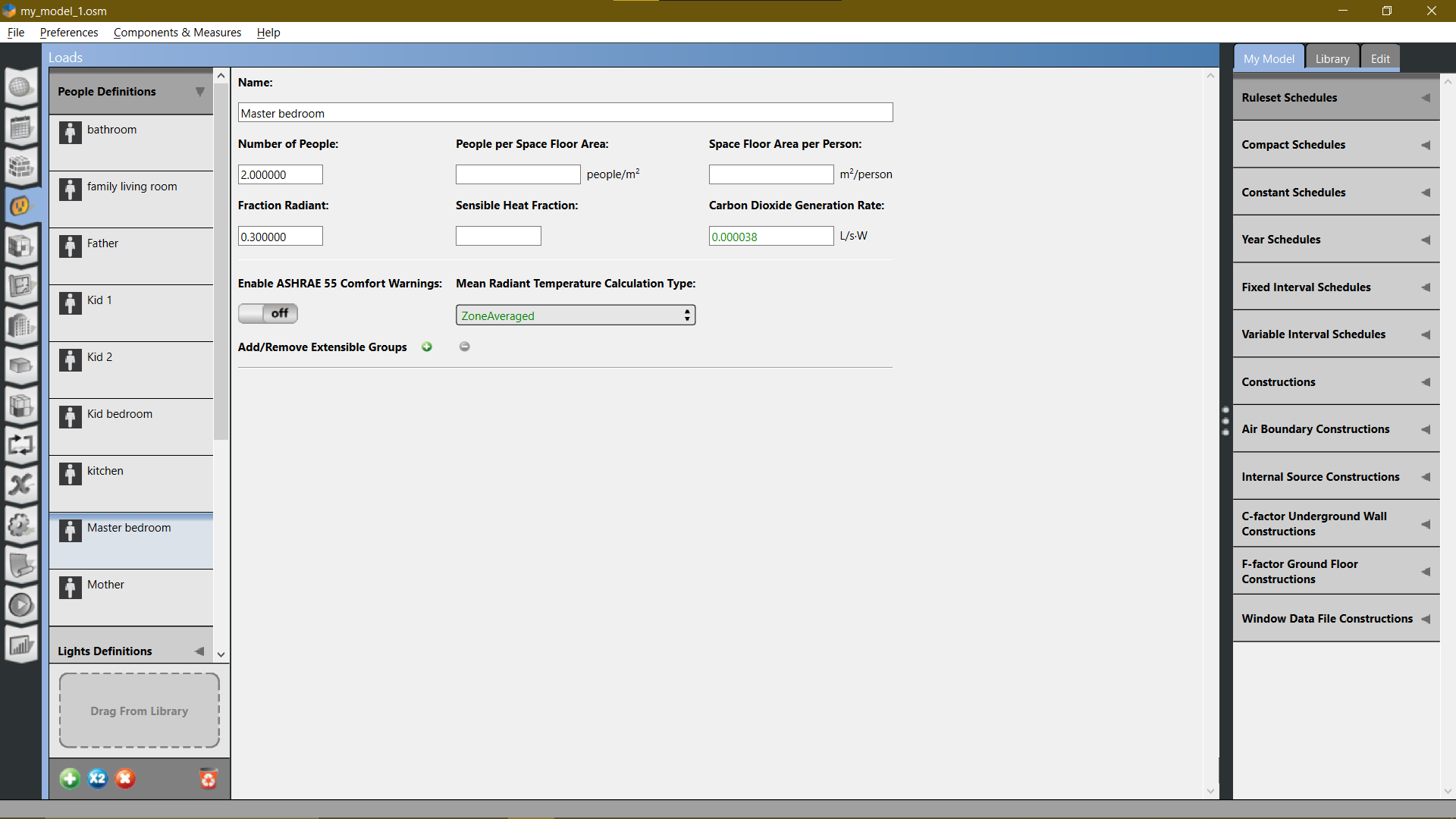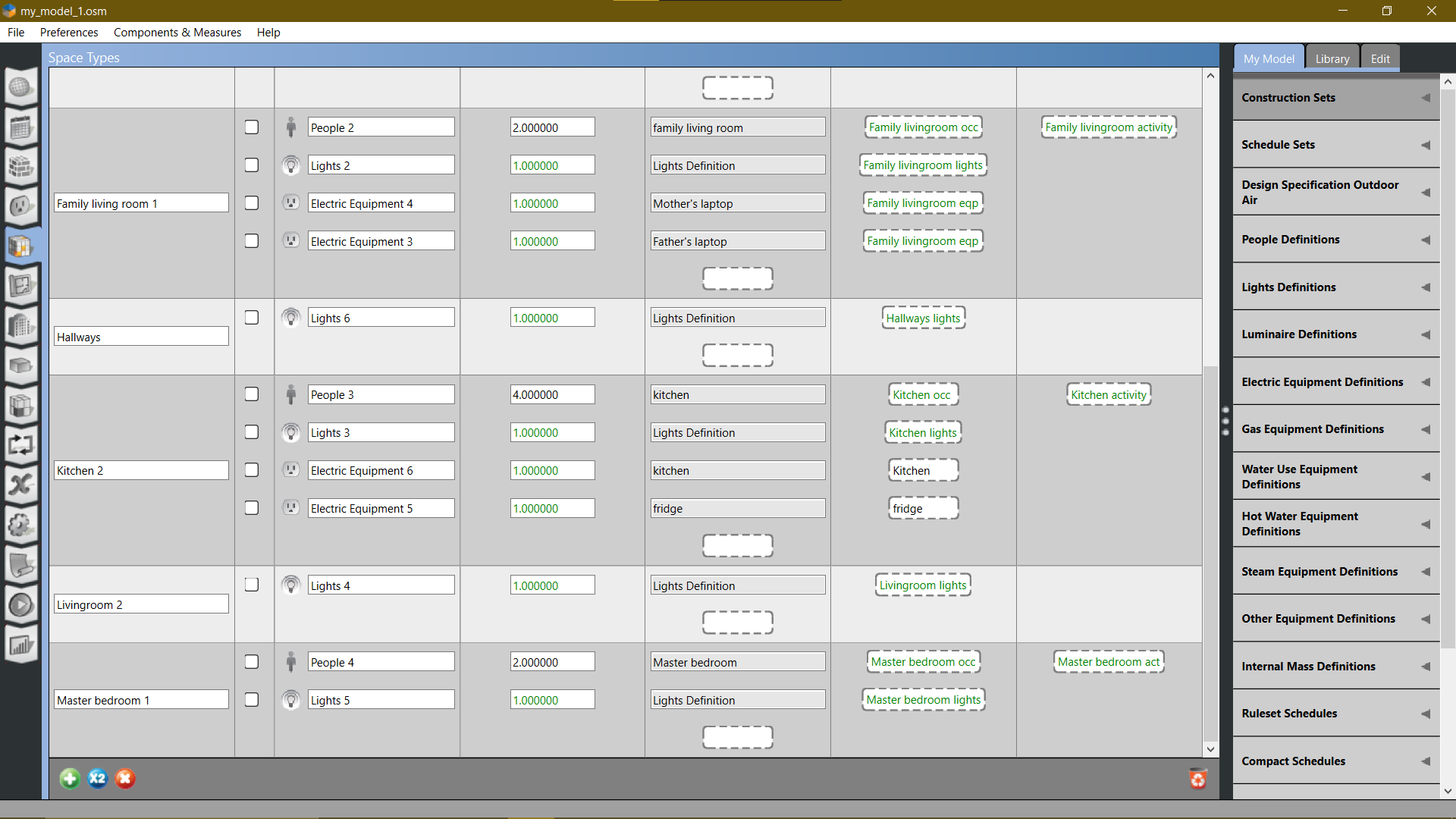That would give you a max of 4x people in "Master bedroom 1".
Think of OpenStudio's PeopleDefinition as a resource one would reference multiple times within the same model, carry over to the next model, etc. It is rare to encounter more than one PeopleDefinition in a given model when relying on the Number of People field. Holding multiple PeopleDefinitions makes more sense when People are instead calculated from dissimilar occupancy densities (e.g. code compliance). ActivitySchedules are the preferred way to adjust metabolic rates in a model (e.g. basketball players vs spectators, daycare workers vs toddlers). A Space or SpaceType can hold multiple instances of People (kids vs parents), while still referencing a single PeopleDefinition. For instance, if one wanted to distinguish 2x children from both parents, a model of a house could hold:
- 1x PeopleDefinition, where the Number of People is set at "1"
- e.g. 1x, 2x or 3x (it depends) People object(s) per space, where each multiplier equals the max number of expected kids and/or parents in that space, with potentially unique occupancy and activity schedules for each.
Ensure occupancy schedules are harmonized between spaces, so the overall number of kids in the house doesn't magically switch from 2x to 6x for an hour or two. Keep in mind uncertainty in short term occupancy/mobility patterns is usually significant. The end goal (e.g. code compliance vs research) is key in determining the required level of detail. Hope this helps.







